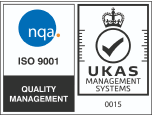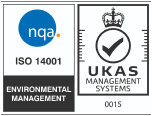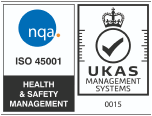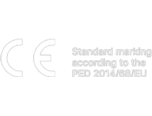
Setting standards in the LNG industry
Fuelling ships in the Nordic regions; shale gas fields in the US; vehicle use across the globe; an energy resource to power major cities in China and other developing countries – these are just some of the applications which demonstrate the incredible scope and breadth of the LNG industry.
But behind this dynamic story of growth and global opportunity, I hear major concerns at the diverse LNG forums and conferences I attend. Experts in the shipping industry in particular have highlighted the impact on safety as companies race to keep up with new LNG applications. Ship fuelling, bunkering, vehicle fuelling, mobile stations and a multitude of other uses raise the question – who should set the technical and safety standards?
Safety is a concern that is shared at cryogenic valve provider, Herose. It is the key to commercial success because of the fatal impact that accidents can have on people, the environment, an organisation’s shareholder value, and the reputation of the industry. What is more, it only takes one incident to ruin a company’s perfect safety record, as has been seen in the industrial gas industry in the past.
If similar incidents are repeated with LNG, the consequences for the entire industry will be catastrophic. In 1994, an industrial gas incident in Germany was caused when a cryogenic vessel exploded, resulting in a fatality. Concerns about all low-pressure vessels and high-pressure trailer pumping resulted in changes to vessel and valve codes in many countries. Today, the industrial gas industry has regulating authorities and is managed by the major industrial gas companies who drive high industry standards and make working with these gases safer than ever.
Processes such as filling, which have become a daily activity in the LNG industry, are governed by stringent standards. As LNG applications diversify, surely now is the time to learn from previous mistakes and adopt standards, rather than wait for an issue to drive change?
Who should set the standards? The majority of companies using LNG take their safety responsibility seriously and make sure their systems and components meet industry specifications. However, Herose provides advice and supplies the valves needed for every stage of the cryogenic storage and transportation process, and it still sees companies using different types of valve for the same application. In view of this, there is a need to develop global, mandatory standards. So who should take the lead in setting them?
Perhaps relevant industries need to form partnerships to consider whether the responsibility lies within the specific sectors using equipment such as oil and gas, shipping or industrial gas sectors. Alternatively, global equipment manufacturers have an in depth understanding of what is required with installations; or perhaps national or global agencies could take ownership?
Gas associations and safety organisations that protect the LNG and industrial gas industries include SIGTTO. This is the world’s leading safety organisation for LNG, encompassing almost all the world’s LNG tanker and terminal operators.
The industrial gas industry has the CGA in North America, EIGA in Europe and other international organisations including AIIGMA, JIGA, AIGA and ANZIGA. The CGA co-operates with its sister organisation EIGA to develop harmonised technical rules to protect the industry, personnel and the public. It could be highly beneficial to both the LNG and industrial gas sectors to harmonise standards for LNG use.
Indeed, many equipment manufacturers supplying the LNG market operate to the standards of the industrial gas industry. As the specifications for vessels and valves used in these markets often differ, surely there’s a need for our associations to work together to agree joint standards and share best practice across the full range of cryogenic applications?
Colleagues in each association and industry sector have different views and recently I have heard some powerful messages promoting the safe use of LNG. However, these have related to individual market sectors and not LNG as a whole. LNG has been seen to grow significantly as an industrial gas application throughout the latter half of gasworld’s 100 issues. As we embark upon the next 100, surely this is a good time to question, who should drive change in both LNG technical and safety standards?







